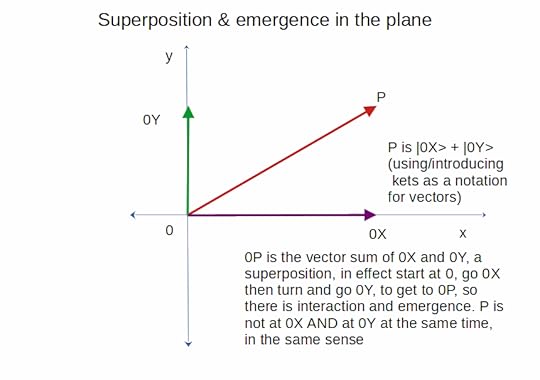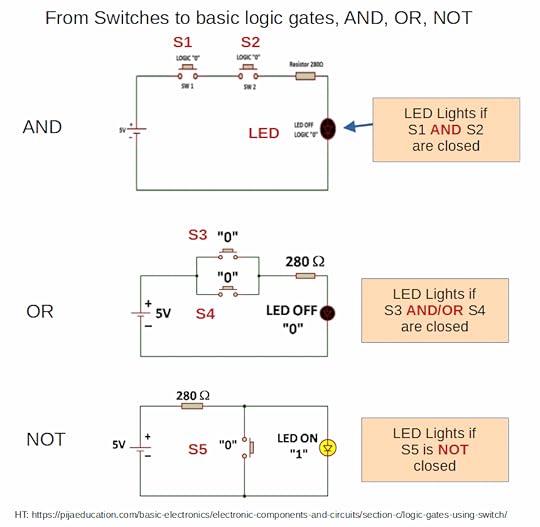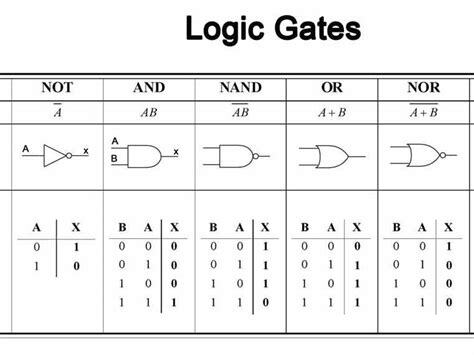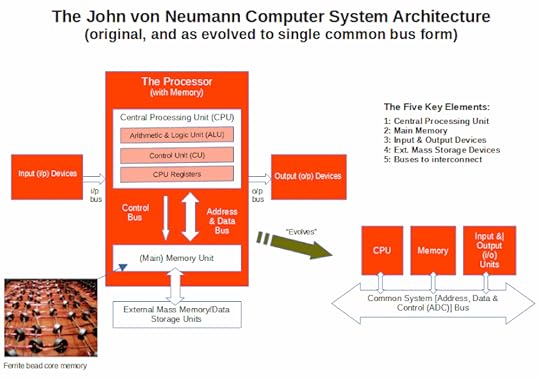Michael J. Behe's Blog, page 9
February 22, 2023
Nigerian pastor on Darwin’s legacy in Africa
Olufemi Oluniyi, was writing a book on the inmpact of Social Darwinism in Nigeria and he managed to send his manuscript to the Discovery Institute before his death from COVID in 2021.
Social Darwinism is Darwinian evolution theory as applied to human societies.

Here’s the book: Darwin Comes to Africa (Discovery Institute Press, 2023)
Here’s a podcast in which John West talks about the book.
On today’s ID the Future, scholar John West introduces Darwin Comes to Africa, the new book by Nigerian pastor, theologian, journalist, scholar, and human rights activist Olufemi Oluniyi. The work explores the poisonous influence of social Darwinism on British rule in northern Nigeria in the late nineteenth and early twentieth century, a poisonous influence felt in Oluniyi’s home country down to the present, he argues. The book project grew out of Oluniyi’s intimate knowledge of Nigerian culture as well as his attendance at the 2017 Center for Science & Culture Summer Seminar program in Seattle, Washington. By the end of that nine-day gathering, he had resolved to write a book about the impact of Social Darwinism on his home country and announced that intention to his fellow attendees. He died of Covid-19 four years later, but not before completing in-depth research on the subject of the book and sending Discovery Institute his manuscript. Listen in to learn more about what Oluniyi discovered, and purchase his fascinating book here..
Here’s a piece adapted from Dr. Oluniyi’s preface to the book: “The Cruel Legacy of Social Darwinism in Nigeria”:
Social Darwinism rests like a tiger moth on Darwinism, its mother theory; when challenged with facts, it just flits to a slightly different position…
One startling iteration of Social Darwinism occurred under the guise of tactical warfare in the 1920s, when a Russian scientist sought to produce a race of super-soldiers for Stalin’s army by impregnating women from French Guinea with the sperm of a dead chimpanzee — black African women, mind you, who were presumed to be less highly evolved and thus closer to chimpanzees than were white European women. The Russian scientist was not a lone gunman, so to speak. Colonial authorities approved the plan, and the Russian found support amongst both French and American scientists.
Horrifying though this experiment is in terms of religion and morality, it makes ethical sense under Social Darwinism. If humans are naught but evolutionarily advanced animals, and if we breed and crossbreed animals to suit our purposes, why should we not breed humans in the same manner?
From Dr. Oluniyi’s bio: “Rev. Dr. Olufemi Olayinka Oluniyi (1948-2021) was Executive Director of the Centre for Values and Social Change in Lagos, Nigeria, which he founded. Author of Reconciliation in Northern Nigeria: The Space for Public Apology, he was involved in peace, reconciliation, and social justice efforts in Africa for many years, and he had a particular interest in how European colonial policies toward Africa were shaped by Social Darwinism.”
Rest in peace, pastor.
Copyright © 2023 Uncommon Descent . This Feed is for personal non-commercial use only. If you are not reading this material in your news aggregator, the site you are looking at is guilty of copyright infringement UNLESS EXPLICIT PERMISSION OTHERWISE HAS BEEN GIVEN. Please contact legal@uncommondescent.com so we can take legal action immediately.Plugin by Taragana
The Inconsistencies of Materialism
Materialism—the belief that everything that exists is the result of the action of the basic laws of physics on the basic particles of physics—leads its adherents to some conclusions that most do not really believe but are obliged to assert.
For example, they often claim there is no real free will, that everything we do is determined by the laws of physics. But if they really believed this, why would they bother trying to convince the rest of us? Whether or not we will accept their conclusion has already been pre-determined, it is completely beyond our control. Certainly our behavior is influenced, maybe to a large degree, by our heredity and environment but no one would possibly conclude that he has no control over his own behavior if he were not forced to this conclusion by materialist philosophy.
Materialists are also forced—if they are consistent—to believe that there is no real good or evil, for how can some actions be “good” and others “evil,” if everything we do is beyond our control and determined by the laws of physics? While there is substantial disagreement among humans over the details of moral codes even atheists know in their hearts that there is a difference between good and evil. Have you ever known an atheist who did not appeal to morality to justify his actions, or to criticize those who disagree with him?
Materialists are also forced to believe that human brains are just advanced computing machines, and this leads to one of the most interesting inconsistencies of materialism. The current ID debate can be reduced to the question: is everything we see today simply the result of unintelligent causes or is an intelligent cause required to explain some things? (Even though the big bang theory has shown that the laws of physics and the particles of physics are themselves the result of some cause beyond our universe, the debate is still over whether this first cause is intelligent or unintelligent.)
But what does “intelligent” mean? Since humans are the only known intelligent beings in the universe, when we argue that a cause is intelligent, we can only mean “like humans.” But if you really believe that human intelligence, like everything else in the universe, is just matter in motion what difference does it make if a cause is like humans or like rocks? Both are just matter in motion! A consistent materialist would have to conclude that the ID debate is over a trivial distinction. But we all—including materialists—know that humans are not like rocks and so the debate is significant.
Please see my videos Why Evolution is Different and A Summary of the Evidence for Intelligent Design.
Copyright © 2023 Uncommon Descent . This Feed is for personal non-commercial use only. If you are not reading this material in your news aggregator, the site you are looking at is guilty of copyright infringement UNLESS EXPLICIT PERMISSION OTHERWISE HAS BEEN GIVEN. Please contact legal@uncommondescent.com so we can take legal action immediately.Plugin by Taragana
February 21, 2023
Genes that appear from nowhere — a tutorial
A friend notes — about these de novo (from nowhere) genes — that narrator Anne-Ruxandra Carvunis stresses that the genetic patterns she studies don’t fit the evolutionary theory learned “since I was an undergraduate.” The de novo gene literature mirrors that, we are told.
Well, if she has a job story instead of a sob story, eventually, the discrepancies will add up.
Copyright © 2023 Uncommon Descent . This Feed is for personal non-commercial use only. If you are not reading this material in your news aggregator, the site you are looking at is guilty of copyright infringement UNLESS EXPLICIT PERMISSION OTHERWISE HAS BEEN GIVEN. Please contact legal@uncommondescent.com so we can take legal action immediately.Plugin by Taragana
Everybody believes in intelligent design where money is concerned
From a Finnish news site:
First, the man played at the Casino for a couple of days. During that time, he secretly took video footage of the spinning of the objects in the slot machine. After filming, the man sent the video files to another person using the Telegram application.
A FEW days later, the man returned to the Casino, playing on two slot machines for several hours a day for less than a week.
The court found it clear that the man’s 189-252 percent return winning percentages per day from the Gaming machines were not normal. No technical fault or other malfunction was found in the operation of the Gaming machines, which could have explained the exceptionally high return rate. – Niko Beach, February 21, 2023
Yes, the lucky gambler was given a conditional sentence — he must pay back the 33k euros.
A smarter operator might have appealed to all the things that Darwinians say have just happened randomly to escape conviction for manipulating the slot machines.
Copyright © 2023 Uncommon Descent . This Feed is for personal non-commercial use only. If you are not reading this material in your news aggregator, the site you are looking at is guilty of copyright infringement UNLESS EXPLICIT PERMISSION OTHERWISE HAS BEEN GIVEN. Please contact legal@uncommondescent.com so we can take legal action immediately.Plugin by Taragana
How did microproteins appear from nowhere?
At Phys.org:
The researchers were surprised to find that the vastly younger microproteins could interact with the much older generation…
However, the ability to bind does suggest the proteins might influence each other’s functioning. Initial cellular experiments conducted at the Max Delbrück Center in collaboration with Professors Michael Gotthardt and Thomas Willnow confirm this assumption. This leads Ruiz-Orera to suspect that the microproteins “could influence cellular processes that are millions of years older than they are, because some old proteins were present in the very earliest life forms.”
Unlike the known, old proteins that are encoded in our genome, most microproteins emerged more or less “out of nowhere—in other words, out of DNA regions that weren’t previously tasked with producing proteins,” says Ruiz-Orera. Microproteins therefore didn’t take the “conventional” and much easier route of being copied and derived from existing versions. And because these small proteins only emerged during human evolution, they are missing from the cells of most other animals, such as mice, fish and birds. These animals, however, have been found to possess their own collection of young, small proteins. – Max Delbrück Center for Molecular Medicine, February 17, 2023
So… old proteins were present in the very earliest life forms (and yet, presumably, were complex enough to be identified as proteins?) And “ most microproteins emerged more or less ‘out of nowhere—in other words, out of DNA regions that weren’t previously tasked with producing proteins,’…”?
Like we said before, guys, just keep talking. Face the mike and keep talking…
The paper is open access.
Copyright © 2023 Uncommon Descent . This Feed is for personal non-commercial use only. If you are not reading this material in your news aggregator, the site you are looking at is guilty of copyright infringement UNLESS EXPLICIT PERMISSION OTHERWISE HAS BEEN GIVEN. Please contact legal@uncommondescent.com so we can take legal action immediately.Plugin by Taragana
February 20, 2023
Why zebras have stripes – a newer theory
At Phys.org:
Researchers at the University of Bristol have found why zebra fur is thinly striped and sharply outlined.
Their findings, published Feb. 17 in the Journal of Experimental Biology, reveal that stark black-white distinctions and small dark patches are particularly effective in thwarting horsefly attack. These characteristics specifically eliminate the outline of large monochrome dark patches that are attractive to horseflies at close distances.
The team theorizes that the thin back stripes serve to minimize the size of local features on a zebra that are appealing to the biting flies. – University of Bristol, February 20, 2023
This vid claims something else; that it’s actually camouflage:
The paper is open access.
Copyright © 2023 Uncommon Descent . This Feed is for personal non-commercial use only. If you are not reading this material in your news aggregator, the site you are looking at is guilty of copyright infringement UNLESS EXPLICIT PERMISSION OTHERWISE HAS BEEN GIVEN. Please contact legal@uncommondescent.com so we can take legal action immediately.Plugin by Taragana
At Nautilus: We can’t seem to copy the “natural engineering” of the human heart
Nautilus is the Templeton Foundation’s mag:
The failure to produce an artificial heart is a testament to the wizardry of nature.
Nothing shows more clearly the perfect engineering of the heart than our own failed attempts to imitate it. This history of the total artificial heart is punctuated with both brilliant innovation and continual clinical failure…
Solutions seem tantalizingly close, but no one is anticipating an easy ride. The many failures over the years have certainly produced in scientists a humility and awe for the natural engineering of the heart. – Sian E. Harding, February 14, 2023
So. Blind, pitiless indifference beats intelligence and caring? Some people don’t learn quickly, do they?
Copyright © 2023 Uncommon Descent . This Feed is for personal non-commercial use only. If you are not reading this material in your news aggregator, the site you are looking at is guilty of copyright infringement UNLESS EXPLICIT PERMISSION OTHERWISE HAS BEEN GIVEN. Please contact legal@uncommondescent.com so we can take legal action immediately.Plugin by Taragana
Spinosaur brain shows “preadaptation” for catching fish
At ScienceDaily, we learn that brain material survived fromn a spinosaur:
“Despite their unusual ecology, it seems the brains and senses of these early spinosaurs retained many aspects in common with other large-bodied theropods — there is no evidence that their semi-aquatic lifestyles are reflected in the way their brains are organised,” said University of Southampton PhD student Chris Barker, who led the study.
One interpretation of this evidence is that the theropod ancestors of spinosaurs already possessed brains and sensory adaptations suited for part-time fish catching, and that ‘all’ spinosaurs needed to do to become specialised for a semi-aquatic existence was evolve an unusual snout and teeth.
“Because the skulls of all spinosaurs are so specialised for fish-catching, it’s surprising to see such ‘non-specialised’ brains,” said contributing author Dr Darren Naish. “But the results are still significant. It’s exciting to get so much information on sensory abilities — on hearing, sense of smell, balance and so on — from British dinosaurs. Using cutting-edged technology, we basically obtained all the brain-related information we possibly could from these fossils,” Dr Naish said.
That’s “Evolution” for you. Always thinking ahead.
The paper is open access.
Copyright © 2023 Uncommon Descent . This Feed is for personal non-commercial use only. If you are not reading this material in your news aggregator, the site you are looking at is guilty of copyright infringement UNLESS EXPLICIT PERMISSION OTHERWISE HAS BEEN GIVEN. Please contact legal@uncommondescent.com so we can take legal action immediately.Plugin by Taragana
February 19, 2023
L&FP, 65g: Quantum vs classical digital computing — hope or hype? (Or, superposition?)
Quantum computing, of course, has been a hot sci-tech topic in recent years, what with stories as to how it will obsolete the large prime number product encryption schemes that give us some of our strongest codes, and stories of vast computing power exponentially beyond our hottest supercomputers today. With hot money being poured in by the wheelbarrow load. (Well, maybe buckets of bits as most serious transactions are digital nowadays. Itself already a problem . . . security is an issue.)
What are we to make of this? (My bet is, superposition. Itself, a core quantum issue.)
Reader and commenter, Relatd, has given us a useful, first level video:
(A good place to begin, a useful survey with some good food for thought and better than the vids I had found in my searches; thanks. I do have a few quibbles, starting with the common tendency to use the loose language of being “both 1 and 0” to explain superposed — and often, entangled — wave functions in quantum computers. To give a fairly rough analogy, if we have a 2-d space and we say a point,
P — or, |P> — is |0X> + |0Y>, all suitably dressed up in kets . . .

we don’t usually couch that as P is X and Y at the same time, it is something else, a vector away from 0X and away from 0Y, a case of real emergence through interaction. Not, spooky inexplicable emergence. BTW, integers have size and direction from 0 so are already vectors; as are Reals, which are mile-posted by the integers.)
Here is a short vid that may also be useful, especially as it gives a flavour of some problems that may be solvable in a decade or so, or so the guess is:
Ms Hossenfelder, of course, cries hype:
Take headlines with a grain of salt, in short.
Her bet is, most likely, this will be a bubble that fails and in a decade or so, you may be able to discuss multiple particle entanglement with your taxi driver. Maybe.
JVL, another reader and frequent commenter, has given another interesting link, where Sutter guides us in (not) understanding quantum mechanics. A slice gives the flavour:
Yet despite its overwhelming success as a framework for understanding what nature does, quantum mechanics tells us very little about how nature works. Quantum mechanics provides a powerful set of tools for successfully making predictions about what subatomic particles will do, but the theory itself is relatively silent about how those subatomic particles actually go about their lives.
For example, take the familiar concept of a quantum jump. An electron in an atom changes energy levels and thus either absorbs or emits energy in the form of one photon of radiation. No big deal, right? But how does the electron “jump” from one energy level to another? If it moves smoothly, like literally everything else in the Universe, we would see the energy involved change smoothly as well. But we don’t.
So does the electron magically disappear from one energy level and magically reappear in another? If it does, name one other physical object in the Universe that acts like that. While you’re at it, please give me a physical description of the unfolding of this magic act. I’ll wait.
Quantum mechanics is completely silent on how the electron changes orbitals; it just blandly states that it does and tells us what outcomes to expect when that happens.
How are we supposed to wrap our heads around that? How can we possibly come to grips with a theory that doesn’t explain how anything works? People have struggled with these questions ever since quantum mechanics was developed, and they’ve come up with a number of ways to make sense of the processes involved in quantum behavior.
I confess to being a Copenhagenist, with hints of “shut up and calculate” — anyone who has done solid state electronics will understand why, and also why some suggest that “roughly a quarter of our world’s GDP relies on quantum mechanics.” Empirically reliable, astonishingly precise but intractable conceptually and often downright weird. Feynman is hardly the only Physicist or Nobel Prize winner to suggest that no one understands Q Mech.
But now, we are looking at computers that don’t just use Q Mech to power the devices in circuits that neatly deliver 1’s [hi voltages] and 0’s [lo voltages], electronic extensions of arrangements of switches:

Where, each switch latches in on or off states and stores one binary digit, bit of information.
We represent such gates — in electronic circuit form — with modified amplifier symbols, with the bubble as NOT, e.g.

Things get interesting when we use feedback and create memory elements [the core of registers] starting with the RS latch. Just to mix things up, let’s use the NOR gate latch:

Here, the HOLD state is a memory storage state. Latches and flip flops are core to registers, which in turn are at the heart of a classical digital computer such as the classic IBM s360. In outline:

But now, we have gone to superposed quantum state bit elements, Qubits. As Wikipedia helpfully summarises:

Thus, we see the Bloch sphere representation of the superposed state of a Qubit:

So, as Mark Hill [Ed] et al summarise:
a classical bit exists in one of two well-defined states, “1”or “0”.
On the other hand, the basic unit of state in quantum computers, the qubit, is described
by quantum mechanical two-level systems, such as the two spin states of spin 1/2 atoms, or the
horizontal and vertical polarization states of a single photon. The difference between a qubit and
a bit is that the physical state of a qubit is described by complex-valued amplitudes equal to the
square root of finding the qubit in one of the two binary states “0” and “1”. Similarly, the state of
an n-qubit quantum system is described by 2^n complex-valued probability amplitudes, each equal to
the probability of finding the quantum system into any of the 2^n possible n-bit binary bitstrings.
Mathematically, the state of an n-qubit quantum system can be represented as a complex-valued
2^n -element vector. Furthermore, a single quantum gate (represented as a 2^n × 2^n unitary matrix)
applied to an n-qubit quantum system acts simultaneously on all 2^n elements of the system state vector. This means that the amount of information that can potentially be processed by quantum
computers doubles with each addition qubit in the system. [Quantum Computing for Computer Architects, 2nd Edn, pp. 7 – 8.]
This makes a quantum computer into a powerful device, once we can put together enough qubits, and once we can figure out how to manipulate them effectively. Just 300 qubits represents a span of 2^300 = 2.04*10^90 states. Estimates for practically scaled machines run to 10,000 – 10 million gates. And no, there is no reason to believe the industry can leverage a Moore’s Law type scaling effect. Which is running out of steam for Silicon.
Qiskit has a useful online site.
So, Q: Hype or hope?
A: Superposition. KF
Copyright © 2023 Uncommon Descent . This Feed is for personal non-commercial use only. If you are not reading this material in your news aggregator, the site you are looking at is guilty of copyright infringement UNLESS EXPLICIT PERMISSION OTHERWISE HAS BEEN GIVEN. Please contact legal@uncommondescent.com so we can take legal action immediately.Plugin by Taragana
Claim: Cuttlefish can solve problems developed for children
Cuttlefish are smart:
But as smart as children? Let us know when they grow up to teach calculus at the local U.
Note: As the video points out, cuttlefish are a problem for conventional assumptions about animal mind. Like their kin octopuses, they are exothermic invertebrates — not supposed to be smart. And yet…
You may also wish to read: Octopuses get emotional about pain, research suggests. The smartest of invertebrates, the octopus, once again prompts us to rethink what we believe to be the origin of intelligence. The brainy cephalopods behaved about the same as lab rats under similar conditions, raising both neuroscience and ethical issues.
Copyright © 2023 Uncommon Descent . This Feed is for personal non-commercial use only. If you are not reading this material in your news aggregator, the site you are looking at is guilty of copyright infringement UNLESS EXPLICIT PERMISSION OTHERWISE HAS BEEN GIVEN. Please contact legal@uncommondescent.com so we can take legal action immediately.Plugin by Taragana
Michael J. Behe's Blog
- Michael J. Behe's profile
- 219 followers



